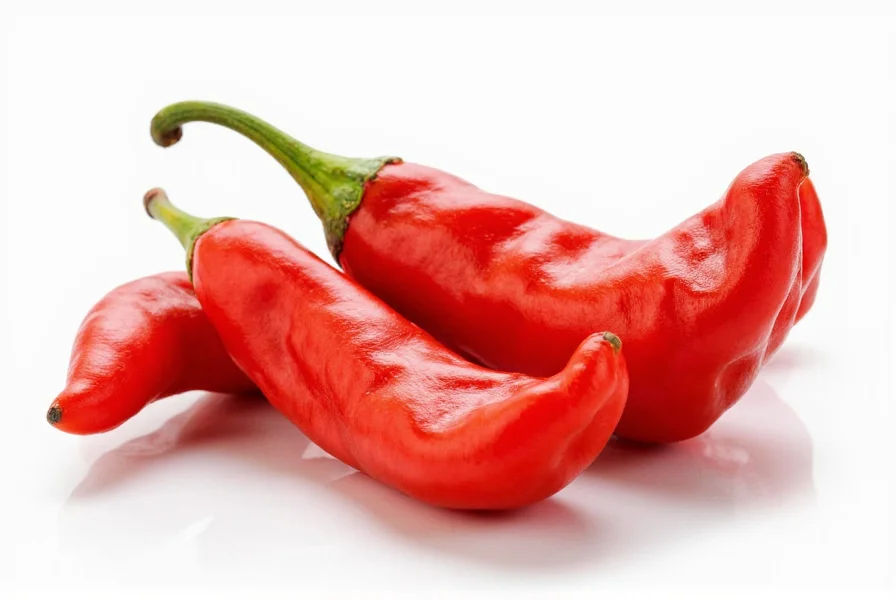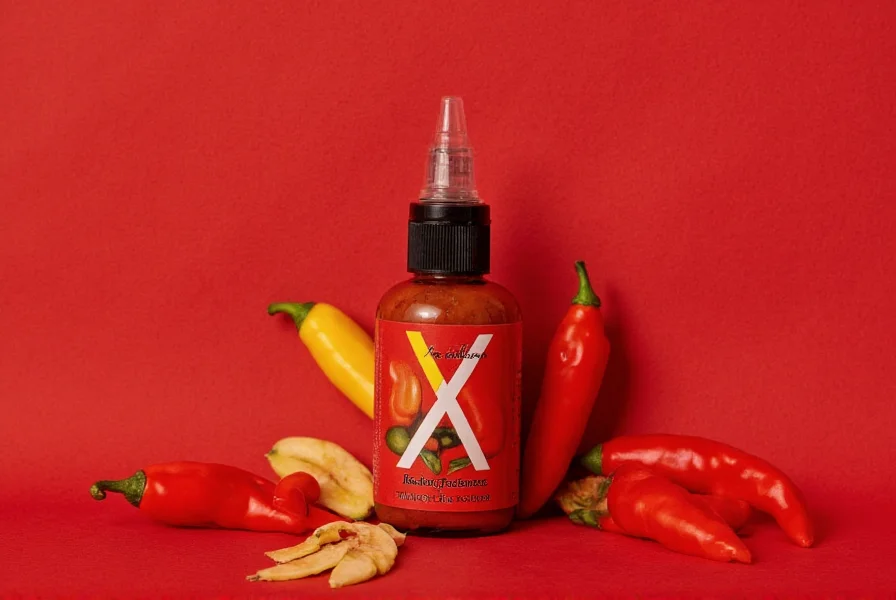Understanding the relationship between Pepper X and hot sauce requires examining both the science of extreme heat and practical applications for sauce makers. While most commercial hot sauces use peppers ranging from 2,500-500,000 SHU, Pepper X operates in an entirely different realm that demands special handling considerations and formulation techniques.
The Science Behind Pepper X Heat Levels
Pepper X's unprecedented heat measurement of 2.69 million SHU places it significantly beyond previous record holders like the Carolina Reaper (1.4-2.2 million SHU). This measurement represents the concentration of capsaicinoids—the chemical compounds responsible for chili heat—in the pepper's placenta and seeds.
What makes Pepper X particularly challenging for hot sauce production is its inconsistent heat distribution. Unlike more predictable peppers, Pepper X can vary dramatically in heat even within the same plant, requiring careful testing and blending to achieve consistent sauce heat levels. Professional sauce makers typically use Pepper X in concentrations of 0.1-0.5% when formulating commercial products.

Pepper X vs. Other Superhot Peppers for Sauce Making
When comparing peppers for hot sauce applications, several factors beyond pure heat matter:
| Pepper Variety | Scoville Range (SHU) | Flavor Profile | Best Sauce Applications |
|---|---|---|---|
| Pepper X | 2,000,000-2,690,000 | Nutty, earthy with subtle fruit notes | Extreme heat finishing sauces, limited edition products |
| Carolina Reaper | 1,400,000-2,200,000 | Sweet, fruity upfront with intense heat | Balanced superhot sauces, hot sauces with flavor complexity |
| Trinidad Moruga Scorpion | 1,200,000-2,000,000 | Fruity, citrusy with delayed heat | Caribbean-style hot sauces, tropical flavor blends |
| Habanero | 100,000-350,000 | Tropical fruit, floral notes | Everyday hot sauces, Caribbean and Mexican cuisine sauces |
Safe Handling Practices for Pepper X in Hot Sauce Production
Working with Pepper X requires extreme caution that goes beyond standard hot pepper handling:
- Always wear nitrile gloves (latex provides insufficient protection against capsaicin)
- Use eye protection to prevent accidental exposure to volatile capsaicinoids
- Work in well-ventilated areas or use fume hoods for concentrated extracts
- Never touch your face or other body parts during handling
- Have milk or dairy products readily available for accidental exposure
Professional hot sauce makers often use Pepper X in extracted oil form rather than whole peppers to achieve more precise heat measurements. This allows for consistent heat levels across batches while minimizing direct handling risks.
Flavor Considerations When Using Pepper X
Despite its extreme heat, Pepper X offers a surprisingly complex flavor profile that skilled sauce makers can leverage. The pepper has subtle nutty and earthy notes with hints of fruitiness that can complement certain flavor combinations when used judiciously.
For optimal flavor integration in hot sauce recipes:
- Combine with complementary ingredients like roasted garlic, smoked paprika, or fruit purees
- Use vinegar with moderate acidity (5-6%) to balance without overwhelming subtle flavors
- Consider fermentation techniques to mellow extreme heat while developing complexity
- Always conduct small test batches before full production
Common Mistakes When Incorporating Pepper X into Hot Sauces
Many amateur hot sauce creators make critical errors when working with extreme peppers:
- Underestimating heat variability - Failing to test each batch of peppers before use
- Insufficient protective measures - Working without proper ventilation or skin/eye protection
- Overpowering other flavors - Using too much Pepper X and masking all other taste elements
- Inconsistent blending - Not properly emulsifying the sauce leading to uneven heat distribution
- Improper storage - Allowing heat to intensify over time due to inadequate pH control
Professional hot sauce producers typically develop Pepper X sauces through extensive testing, often creating multiple iterations before finalizing a recipe. The most successful Pepper X hot sauces balance extreme heat with discernible flavor notes rather than focusing solely on maximum Scoville units.
Practical Applications for Pepper X Hot Sauce Enthusiasts
For home sauce makers interested in experimenting with Pepper X:
- Start with commercially available Pepper X sauces to understand the heat profile before attempting your own
- Use pre-measured Pepper X extract rather than whole peppers for better control
- Begin with concentrations of 0.05% and gradually increase based on taste testing
- Pair with robust flavors like smoked ingredients or strong vinegars that can stand up to extreme heat
- Always label containers clearly and store away from children and pets
Understanding the unique properties of Pepper X helps both commercial producers and home enthusiasts create hot sauces that deliver on both heat and flavor—rather than simply chasing record-breaking Scoville numbers without culinary merit.
What is the actual heat level of Pepper X hot sauce compared to other superhot sauces?
Pepper X hot sauce typically ranges from 1.5-2.5 million Scoville Heat Units (SHU), significantly hotter than Carolina Reaper sauces (800,000-1.6 million SHU). The exact heat level varies based on concentration, with most commercial Pepper X sauces landing around 2 million SHU when formulated for consumer use.
Can you taste anything besides heat in Pepper X hot sauce?
Yes, despite its extreme heat, Pepper X offers subtle nutty and earthy flavor notes with hints of fruitiness. Skilled sauce makers can create balanced hot sauces where these flavors are perceptible beneath the intense heat, especially when combined with complementary ingredients like roasted garlic, fruit purees, or smoked elements.
How should I safely handle Pepper X when making hot sauce at home?
Always wear nitrile gloves and eye protection when handling Pepper X. Work in a well-ventilated area, avoid touching your face, and have dairy products available for accidental exposure. Consider using pre-measured Pepper X extract rather than whole peppers for better control. Never use bare hands or standard kitchen gloves, as capsaicin can penetrate these materials.
Why do some Pepper X hot sauces taste different despite using the same pepper?
Pepper X has significant heat variability even within the same plant, requiring careful testing and blending. Additionally, sauce formulation—including vinegar type, additional ingredients, fermentation methods, and processing techniques—greatly affects the final flavor profile. Two sauces using Pepper X can taste dramatically different based on these formulation choices and the specific batch of peppers used.











 浙公网安备
33010002000092号
浙公网安备
33010002000092号 浙B2-20120091-4
浙B2-20120091-4